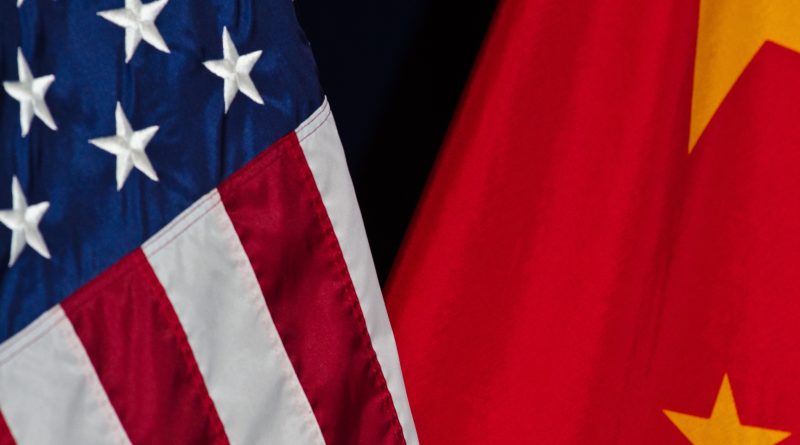Thucydides’ Trap: A New Era of Great-Power Competition Between the United States and China
Drew Starbuck
Staff Writer
Inspired by Thucydides’ History of the Peloponnesian War, political scientist Graham T. Allison coined the term “Thucydides’ Trap” in an article for the Financial Times in 2012. Thucydides’ Trap posits that when a great power’s hegemony is threatened by a rising power, there is a high likelihood of war between the two nations. This proposition is relevant when examining the relationship between the People’s Republic of China (PRC) and the United States. Allison coined this term precisely to characterize increasing U.S.-China tensions, worrying that it would eventually result in a war between the world’s two greatest powers.
While U.S. President Joe Biden has promised to be the antithesis of his predecessor Donald Trump on many issues, both agreed on the need to confront China on security and the economy as the PRC rapidly climbs the economic ladder. President Biden, however, diverges from the previous administration’s unilateral policies by adopting a multilateral approach and forging agreements with other allied nations in the Indo-Pacific regions to confront China. One example is AUKUS, a newly formed trilateral security agreement between the United States, the United Kingdom, and Australia. This pact will allow Australia to build nuclear-powered submarines for the first-time using technology provided by the U.S. and the UK.
AUKUS is one of the most significant defense pacts in decades, as it not only provides nuclear technology to Australia but also extends into other fields such as artificial intelligence and emerging technologies. This diplomatic move was identified as a key move to counter growing Chinese aggression and to shore up defenses with a key American ally in the Indo-Pacific. Chinese officials quickly decried the agreement as “extremely irresponsible.” Chinese foreign ministry spokesman Zhao Lijian said the agreement “seriously undermines regional peace and stability and intensifies the arms race.” The pact will focus on building military capability, as covered by the separate Five Eyes intelligence-sharing arrangement. This marks a turning point for Australia which has become only the second nation besides the UK with access to U.S. submarine technology.
Another creation of Biden’s multilateralism is the Quadrilateral Security Dialogue between the United States, Australia, India, and Japan, dubbed the QUAD. The Council on Foreign Relations explains that maritime cooperation began among these nations after the Indian Ocean tsunami of 2004. Since then, there have been ups and downs in the cooperation among these nations over several economic, health, and security issues, with nations such as Australia reluctant to risk confrontation with China. However, by 2021, the leaders of the four nations have aligned in defense against China’s increasingly aggressive behavior and territorial claims in the South and East China seas. These concerns are highlighted by the increased importance of the Indo-Pacific region, which includes several oceans and nations on different continents and all the maritime trade that flows through the region.
An estimated $1.9 trillion worth of U.S. trade by GDP flows through the region, along with 38 percent of global imports and 42 percent of the world’s exports. The QUAD nations began strengthening mutual ties during the Trump administration, which continue to grow under the Biden administration. Despite growing fear of China’s actions, some policymakers within the QUAD member nations see no benefit of using the alliance—which some call an “Asian NATO”—to contain the Chinese Communist Party. Yet, the QUAD represents more of an effort in cooperation amongst the democracies in the region on shared issues where they can counter China’s regional influence.
Forging alliances is particularly important given China’s open aggression against Taiwan and amid the mainland’s clear signals that it desires reunification with the island. Taiwanese defense minister, former general Chiu Kuo-cheng, recently predicted to the national legislature of Taiwan that the mainland would launch a full-scale invasion of Taiwan by 2025. China’s People’s Liberation Army has been conducting amphibious landing drills on their coastline near the Taiwan Strait in a seeming attempt at intimidation by naval posturing. Additionally, the Chinese government has sent close to 150 military aircraft into Taiwan’s air defense zone in recent weeks. Experts believe that conflict between China and the United States is likely to result from an attempted Chinese invasion of Taiwan to reunify it with the mainland, placing the island at “the heart of deepening discord and rivalry between the two superpowers.”
Taiwan and China have a complex history tied together that started with the Chinese Civil War, resulting in the Communist Party and its followers led by Mao Zedong driving nationalists led by the Kuomintang into exile to Taiwan. The Communist Party considers Taiwan to be a renegade province and adheres to the “One China” policy in which it considers Taiwan to be a part of its territory as the only legitimate government of China with which it will eventually reunify.
The U.S. Air Force has conducted many wargames simulating a potential Chinese invasion of Taiwan and what would happen if the United States came to the assistance of Taiwan. The U.S. Department of Defense’s recent wargames simulating a 2030 invasion using newly-developed weapons such as sixth-generation fighter jets, cargo munition planes, and sensor grid drones were able to repel the Chinese invasion with both sides avoiding massive losses. While this signals good news for the U.S. and Taiwan, it is clear that any conflict involving Taiwan and the two great powers would be devastating, especially if it escalated to a nuclear exchange.
Ultimately, the intensifying tension between China and the United States has led to increased worry among international relations scholars and strategists who believe, like Allison, in the “Thucydides Trap.” President Biden has acknowledged what most people have also come to realize: the world is entering a new era of great power competition and strengthening America’s ties with its allies is key to competing in this new era.


